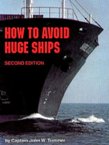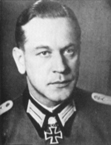Leandros
Posts: 1740
Joined: 3/5/2015
Status: offline

|
quote:
ORIGINAL: Anthropoid
Hmmm. Well I guess I don't understand then, as it was my recollection that it had been recognized for decades that the only reasonable hope of holding out in the
PH was to retreat to Bataan. A quick search reveals, this Decision to Withdraw to Bataan document, which
apparently reports on,,,,
It's called changes.... ... ...
quote:
The latest revision of these plans, completed in April 1941 and called WPO-3, was based on the joint Army-Navy ORANGE plan of 1938
Again, much changed after the start of this work in 1938. The latest plan was brought to MacArthur when Brereton arrived in Manila in November 1941. At that time
MacArthur had already started implementing it. So, one can say what is stated below was out of date. The main change was that all of The Philippines should be
defended. This reflected the build-up of the Philippine Army and arrrival of "new" forces - the heavy bombers and much other equipment. That it wasn't totally
unsound is shown by the fact that the rest of the archipelago remained unoccupied till after the fall of Bataan. The Japanese offensive on Mindanao was even
stalled by purely Philippine units. However, this was not taken advantage of by the US leadership.
quote:
Under WPO-3, American troops were not to fight anywhere but in Central Luzon. (See Map 4.) The mission of the Philippine garrison was to hold the entrance
to Manila Bay and deny its use to Japanese naval forces. U.S. Army forces, constituting an Initial Protective Force, consisting of regular U.S. Army troops,
had the main task of preventing enemy landings. Failing in this, they were to defeat those Japanese forces which succeeded in landing. If, despite these attempts,
the enemy proved successful, the Initial Protective Force was to engage in delaying action but not at the expense of the primary mission, the defense of Manila Bay
. The Americans were to make every attempt to hold back the Japanese advance while withdrawing to the Bataan Peninsula. Bataan, recognized as the key to the
control of Manila Bay, was to be defended to the "last extremity."
Because the new plan didn't hold up - MacArthur had to go for plan B - withdrawal to Bataan. Yes, that was the old plan.
quote:
WPO-3 divided Luzon, the principal theater of operations, into six sectors and provided a mobile reserve. Detailed plans for the defense of each sector were made
by the sector commanders. The commander of the Philippine Division, the only U.S. Army division in the Philippines, in addition to conducting operations in the
sector or sectors assigned to him, was to organize the defenses of Bataan and to command operations there if necessary.
The supply plan in WPO-3 was a complicated one. Provision had to be made to supply the six sectors during the initial phase of operations, to withdraw supplies
into Bataan, and to establish there a supply base capable of supporting defensive operations by a force of 31,000 men for a period of six months. The supplies
required for this purpose were designated the defense reserves, and except for ammunition most of these had already reached the Philippines. Some were already
on Bataan, but the greatest portion by far was stored in the Manila area, which was as yet without adequate protection from air attack. Since these supplies would
have to be moved to Corregidor and Bataan in the event of war, WPO-3 stipulated that the Filipino-American defenders would fight a delaying action to keep the
roads open long enough to carry out this phase of the operation.
quote:
What I gather from this is that, it had long been recognized that, if the fight was going badly, a retreat to Bataan was the place to make a final stand. Given
that, I would have thought that preparations to carry out that "final stand" would be well advanced by December 1941.
They were, but all that had changed in December '41. A little remark to above. At the end of the withdrawal to Bataan the number of people to be accommodated and
supplied there had risen to about 100.000 people. This reflects both the large number of refugees as well as the increased size of the defense forces with the new
Philippine divisions. This necessitated the immediate decision of reduced rations.
I'm rather surprised that the final plan, with the changes outlined by me here, is never referred to. While MacArthur was a proponent for it, how could he not be
with the expansion of the Philippine Army and the Philippine defense in general, it was eventually confirmed and supported by Washington.
Fred
< Message edited by Leandros -- 3/23/2015 11:00:16 AM >
_____________________________
|
 Printable Version
Printable Version


















 New Messages
New Messages No New Messages
No New Messages Hot Topic w/ New Messages
Hot Topic w/ New Messages Hot Topic w/o New Messages
Hot Topic w/o New Messages Locked w/ New Messages
Locked w/ New Messages Locked w/o New Messages
Locked w/o New Messages Post New Thread
Post New Thread